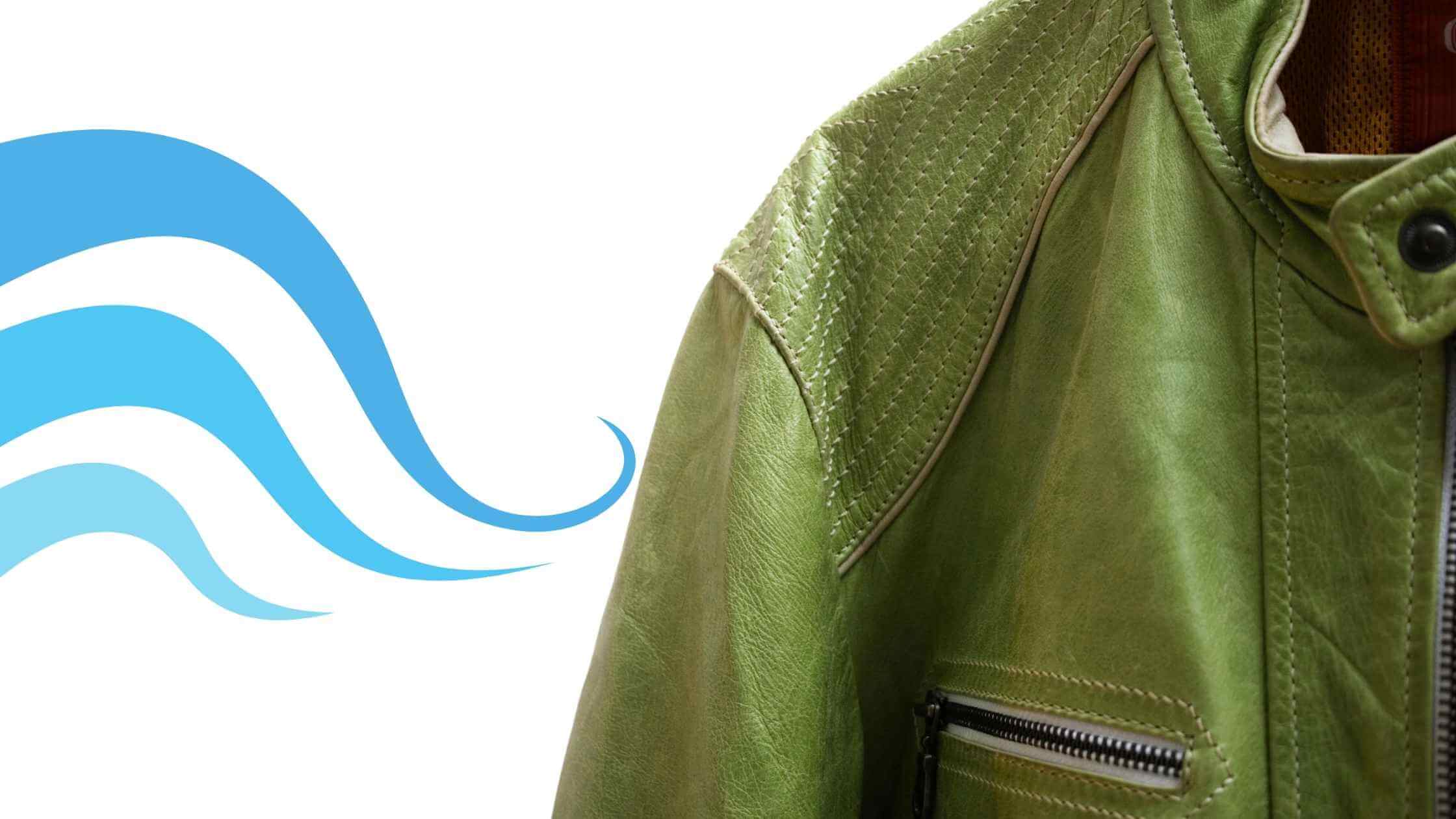Leather jackets are a stylish type of clothing, but are leather jackets warm on cold days? What many people may not know, however, is that the effectiveness of a leather jacket in keeping someone warm depends on a variety of factors.
Leather jackets can keep you warm in the winter, but it depends on the internal fabric used as lining. Leather is excellent in blocking the wind, but the interior lining can keep you warm in cold weather.
Leather jackets are typically made from heavy materials, which help to insulate the body and keep warmth close to the wearer. Additionally, leather jackets can be worn over other layers of clothing, which can create additional insulation and help keep wearers warm.
Key Takeaways:
- The efficiency of a leather jacket in keeping one warm depends on a variety of factors including the internal fabric that is used for its lining – effective lining materials include wool, shearling, faux fur, and down insulation.
- Leather is an excellent insulator against the cold due to its thickness, texture, and durability. It also effectively blocks wind.
- Different types of leather jackets are suitable for varying levels of cold, such as leather motorcycle jackets, leather bomber jackets, and leather flight jackets.
- High-quality real leather jackets are generally warmer than faux leather jackets because they possess better insulation.
- Apart from the lining and insulation, the style of the jacket, how it’s cared for, the color of the jacket, the applied leather protectants, and the weight of the jacket can also affect its warmth.
- Wearing layers under a leather jacket can increase its warmth, as can wearing accessories like scarves and gloves.
- Leather jackets aren’t necessarily bad for snow as long as they’re properly treated and maintained regularly. They are also said to get better with age if well taken care of.
Is Leather a good cold insulator??
The thickness, texture, and durability of leather make it a great material for cold insulation. Leather is made from animal skin that has undergone processing to ensure that it remains durable and flexible, which is important for winter coats.
It’s important to keep in mind that the quality of the lining can impact the effectiveness of the leather jacket in gelid weather conditions.
Do leather linings really play a role?
Keeping leather jackets warm in winter isn’t all about the leather outer layer. The lining of each jacket can make a big difference in how warm you stay. Different types of insulation can be used, depending on the wearer’s needs.
A low-quality lining can retain moisture and lead to discomfort when worn outdoors for extended periods. This means that your jacket won’t hold you warm in gelid conditions.
Types of lining in leather jackets
There are different types of linings used in leather jackets, each with its own level of heat. A leather jacket with an in-built liner that passes through the sleeves is warmer than without.
The different types of lining are as follows:
Inside wool lining – Wool is a natural product that can keep individuals warm without adding too much bulk. Woven fabrics are sometimes used instead of wool for additional warmth, but this material can also retain moisture.
Shearling – is an extremely soft material made from sheepskin, which makes it great at trapping body heat.
Faux fur – synthetic fabrics are sometimes used in place of shearling. These are typically less expensive but are not quite as warm.
Down insulation – is extremely lightweight and makes it an excellent choice for jackets that don’t need to do much insulating. However, it can be more difficult to clean than other lining types.
A leather jacket with great interior lining can effectively insulate the wearer from gelid weather conditions. However, it’s important to note that having a durable exterior is equally important in keeping you warm!
Best leather jacket lining for cold temperatures
Different lining types can create different degrees of warmth in a leather jacket. A leather jacket with a higher level of insulation is recommended for very cold temperatures.
The most effective leather lining is a quilted polyester lining, which provides the warmest insulation. This type of interior lining is often used in leather jackets to provide heat without limiting movement.
What temperature is a leather jacket good for?
Leather jackets are typically considered good for temperatures ranging from 40 to 60 degrees Fahrenheit (4 to 15 Celsius). Leather insulates well against cold weather, making it an ideal material for winter clothing.
However, Leather is a natural material that is breathable, which means it can also keep the wearer cooler in warmer weather.
Type of leather jackets for cold weather
Different types of leather jackets are good for different levels of cold.
Leather motorcycle jackets
Leather motorcycle jackets are popular among winter riders because they’re designed to protect against wind and rain, which helps keep the wearer warm even in gelid weather conditions.
Leather bomber jackets
Leather bomber jackets can also be worn in colder weather if they have an effective lining. A high-quality lining is key to keeping the wearer warm in winter.
Leather flight jackets
A leather flight jacket with a quilted lining or wool lining can also help insulate the wearer against gelid weather. Leather aviator jackets are typically recommended for colder climates due to their design and style.
Is real Leather warmer than faux Leather?
Synthetic leather jackets are less expensive than natural leather jackets. Faux leather jackets do not have the warmth of real Leather. Synthetic Leather is made from plastic and then treated with chemicals to give it the appearance of real Leather. But, synthetic Leather is waterproof and can handle moisture and humidity well.
Generally, real Leather holds heat better than faux Leather because it has more insulation. This is not always the case, so it’s important to consider multiple factors before deciding which type of material will keep you warmest.
In light of this, high-quality real leather jackets usually give superior levels of heat and protection by effectively adapting to your body temperature. It absorbs your body heat and keeps the same amounts of heat as you continue to wear it.
However, fake leather jackets can also keep you warm and be a great choice for winter. These include leather imitations such as microsuede and cotton-polyester blends.
It should be noted that real leather jackets will typically cost more than faux leather jackets. Still, the higher price tag is typically associated with improved comfort and durability. While you can find a great faux leather jacket for under $100, upgrading to real Leather will provide you with superior comfort and warmth.
What to look for when buying a leather jacket for cold weather?
Do not choose a jacket based on warmth alone; consider your activities and needs before purchasing a jacket.
If you want a jacket primarily for biking, a heavy biker leather jacket is a good choice. Wearing a leather jacket while biking in gelid weather can keep you warm because it will retain heat well.
If you are buying the jacket primarily for fashion purposes, then select one with an effective lining that is appropriate for your climate.
Make sure to take measurements before buying a jacket because you want one that fits well but still allows room for layering underneath if needed.

Other factors affecting the leather jacket’s warmth
In addition to lining and insulation, other factors can affect how warm a leather jacket will be. These include:
- The style of the jacket;
- How you take care of your jacket;
- The color of the jacket;
- Leather protectants in your jacket;
- The weight of the leather.
Style of the leather jacket
Leather jackets with quilted leather help to keep you warm. Hooded leather jackets are a great style for retaining heat.
How you take care of your leather jacket
How you take care of your jacket can also affect its warmth. Leather that is not cared for or treated can cause water and moisture to get into the jacket, quickly releasing heat and leaving wearers cold.
Condition the leather with a leather conditioner regularly to keep it soft and protect it from bacteria. Do not store your jacket in an extremely hot place such as by a heater or outside during summer because it can affect the Leather’s durability.
Do not store your leather in humid conditions because this causes rot in the leather. Do not store your jacket near chemicals or in plastic bags, which can also damage the material and affect its lifespan.
The color of the leather jacket
The color of the jacket will play a role, to some extent, in how much heat or warmth you will be able to get with your jacket. Dark colors such as black, dark browns, etc., are must-haves if you’re planning to combat cold with a leather jacket.
Leather Protectants
Leather protectants are applied to leather jackets to protect them from harmful UV rays, water stains, daily wear, tear, etc. Proper application of leather protectants can add significant warmth to a jacket.
The weight of the leather jacket
The weight of the Leather itself contributes to warmth. A thick, heavy material may contribute significantly more to warmth than lighter materials.
How to make my leather jacket warmer?
Wearing multiple layers of clothes underneath a leather jacket will generate more heat. Zipping up the jacket sleeves will help to keep the heat generated inside the jacket.
Oversized jacket styles are preferable for this type of clothing. Accessories, such as scarves and gloves, can be helpful to maintain you warm while wearing a jacket in gelid weather conditions.
A Sweater with a fur-lined leather jacket
A sweater in a leather jacket can increase heat retention. Do not wear a sweater with an extremely tight-fitting jacket. However, there must be room for the material to stretch and expand to help retain heat.
The hood of a winter coat or sweatshirt over a leather jacket is another good way to keep warm while wearing one of these jackets in winter.
A Scarf
A scarf can be wrapped around the neck to keep heat in. Do not wear the scarf too tight; you want it to hang loose and moveable beneath the jacket.
Gloves
Wearing leather gloves with your jacket can also help retain warmth. Do not wear gloves that are too bulky. However, if they are larger than your sleeves, this will severely reduce the amount of heat generated inside your jacket.
Is snow bad for leather jackets?
Some people believe that leather jackets are not good for snow, but this is not true. A properly treated and pretreated jacket can withstand snow flurries.
If you head to the snow, make sure to take care of your jacket, so it lasts a long time.
Do leather jackets get better with age?
As leather jackets are made of natural material, some people believe they get better with age. This is not true because the more you wear a leather jacket, the more it wears down.
However, if you take care of your jacket and have it repaired if needed, it will last considerably longer while keeping its warmth and durability.
Is Leather warmer than wool?
The warmth-retaining properties of wool are superior to those of Leather. On the other hand, Leather has an excellent natural heat absorption capacity, especially in snow and wind. Wool is naturally insulating by nature.
Are motorcycle leather jackets warm?
Yes, leather motorcycle jackets are warm. This is because the material itself is warm, to begin with, and it has multiple layers of warmth-keeping insulation inside. Leather motorcycle jackets are generally considered suitable for temperatures as low as about 40 degrees Fahrenheit (about 4 degrees Celsius).
Conclusion
Leather jackets are great for keeping you warm in winter, but not on their own. Choosing a good quality lining that will keep the cold out and warm air in is essential.
This type of jacket is a classic article of clothing that has stood the test of time. Do not let gelid weather stop you from enjoying this stylish garment. Leather jackets can be warmer than other jacket styles, with proper care and consideration to the factors above, which come into play to keep leather warm in wintertime conditions.

